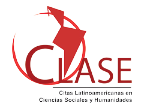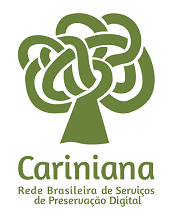The Paiter-Suruí and the social appropriation of technology, information and communication: from oral memory to digital memory
DOI:
https://doi.org/10.5433/1981-8920.2019v24n3p289Keywords:
Social Appropriation, Culture, Digital Memory, Oral Memory, Technology, Communication and Information (ICT)Abstract
Introduction: this work is based on a historical-sociological approach, with the intention of using the conceptual dialogue of the social sciences with the informational concepts in the reorganization of the culture of the Paiter-Suruí ethnic group in its relation with contemporary culture and the digital world. Far beyond cultural exchanges and impositions, the imperative of acquisition through the social appropriation of technologies, communication and information (ICT) induced the Paiter-Suruí to a cultural adaptation and resistance to the network society. Objective: the paper proposes to present the process of transition from oral memory to digital memory. Methodology: This is a case study with documentary survey of the period of 2006: Paiterey Garah Indigenous Land Management Plan, Ethnozoneament and Oral Transcriptions to the present day of the Paiter-Suruí partnership with Google Inc., bibliographical review of information science, dialoguing with the social sciences. Results: the research reveals the process of cultural transition through social appropriation, reflecting the consequences, pros, cons and perspectives. Conclusions: social appropriation did not replace Paiter-Suruí´s oral tradition. Their expressions extended and the digital media became one of their presentations. The preservation of culture continues to be oral, but virtual sharing with other cultures announces them to the world. Their frontiers expanded beyond the real territory, their virtual expansion allowed them visibility and that, now, their voice echoes.Downloads
References
ASSMANN, A. Espaços da recordação: formas e transformações da memória cultural. Campinas: UNICAMP, 2011.
CALVET, L. Tradição oral & tradição escrita. São Paulo: Parábola Editorial, 2011.
COORDENAÇÃO DAS ORGANIZAÇÕES INDÍGENAS DA AMAZÔNIA BRASILERIA. Corredor Tupí Mondé movimento indígena se articula na região. Manaus, 4 jul. 2011. Disponível em: http://www.coiab.com.br/coiab.php?dest=show&back=noticia&id=741&tipo=N&pagina=4. Acesso em 23 out. 2018.
HJARVARD, S. A midiatização do Habitus: o caráter social de um novo individualismo. In: HJARVARD, S. A midiatização da cultura e da sociedade. São Leopoldo: Unisinos, 2014.
HJARVARD, S. Da mediação à midiatização: a institucionalização das novas mídias. Parágrafo, v. 3, n. 2, jul./dez. 2015.
LE GOFF, J. História e memória. Campinas: UNICAMP, 1990.
MELO, K. C.; SILVA, A. de A.; SURUÍ, A. N. Os Paiter Suruí e o Mapimaí: a representação como “marcador territorial”. ACTA Geográfica, v. 9, n. 20, 2015. Disponível em: https://revista.ufrr.br/actageo/article/view/1999. Acesso em: 25 out. 2018.
DICIONÁRIO AMBIENTAL ((O))ECO. O que é Evapotranspiração. 2014. Disponível em: http://www.oeco.org.br/dicionario-ambiental/28768-o-que-eevotranspiracao. Acesso em: 10 out. 2018.
PUCCI, M. D. A Arte oral: Paiter Suruí de Rondônia. 2009. 364 f. Dissertação (Mestrado em Ciências Sociais) – Pontifícia Universidade Católica de São Paulo, 2009. Disponível em: https://tede2.pucsp.br/handle/handle/4066. Acesso em: 20 out. 2018.
RIBEIRO, F. Memória, Informação e Ciência da Informação: relações e interdependências. In: OLIVEIRA, E. B. de; RODRIGUES, G. M. (Orgs.). Memória: interfaces no campo da informação. Brasília: UnB, 2019. p. 111-137.
ROMERO, Z. M. Os Paiter Suruí: do arco e flechas ao uso das tecnologias do século XXI. In: Congresso Internacional de História, Anais [...], 2013. Disponível em: http://www.cih.uem.br/anais/2013/trabalhos/118_trabalho.pdf. Acesso em: 20 dez. 2019.
TRUBILIANO, C. A. B.; FERREIRA, L. M. R. Apontamentos sobre educação, cultura e etnoconhecimentos Paiter Suruí. Revista Educação e Cultura Contemporânea, v. 15, n. 40, 2018. Disponível em: http://periodicos.estacio.br/index.php/reeduc/article/viewArticle/1371. Acesso em: 10 nov. 2018.
Downloads
Published
How to Cite
Issue
Section
License
A revista se reserva o direito de efetuar, nos originais, alterações de ordem normativa, ortográfica e gramatical, com vistas a manter o padrão culto da língua e a credibilidade do veículo. Respeitará, no entanto, o estilo de escrever dos autores. Alterações, correções ou sugestões de ordem conceitual serão encaminhadas aos autores, quando necessário.
O conteúdo dos textos e a citação e uso de imagens submetidas são de inteira responsabilidade dos autores.
Em todas as citações posteriores, deverá ser consignada a fonte original de publicação, no caso a Informação & Informação.











